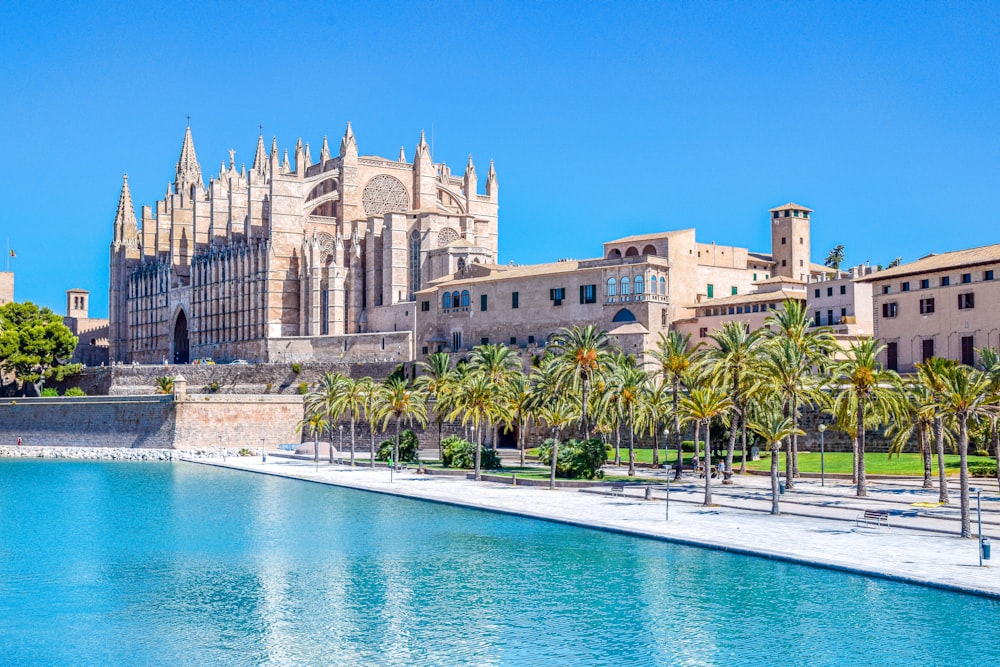
And now the stars of culture and politics, as well as the Spanish monarchs, like to rest here. Palma de Mallorca has a mixture of different eras and architectural styles.
The sights of Palma de Mallorca are varied due to the rich history of the area. Different architectural styles are mixed here, and the bay, on the banks of which the city is built, is considered one of the most picturesque in the world.
Cathedral “La Seu”
The architectural dominant of the city, the central temple of the whole society of the Balearic Islands is the Cathedral of St. Mary. It took almost 800 years to build! The building was founded in 1230, and the decoration of the facade and interior was completed at the beginning of the 20th century. The cathedral is gothic. This is one of the most illuminated buildings of this kind – due to the peculiarities of the windows, it seems that inside it is filled with light.
The interiors of the building and external lighting were designed by Antoni Gaudi himself. The cathedral is located in the city center, at Plaza Almoina. You need to walk along the Costa de la Seu street to the Almudaina Palace, and the cathedral will be located immediately on the right. This Gothic cathedral took almost eight centuries to build.
The temple is welcoming visitors from 10:00 to 17:15 daily. The entrance fee is 6 euros, but on Sunday during the morning service (starts at 11:15), the entrance to the building is free for everyone.
Almudaina Palace
Immediately on the main square of the city is the oldest palace in Spain – the Palazio de la Almudaina. During the reign of the Arabs in Mallorca, the palace was a real fortress, the defensive center of the city. The building is a striking representative of the defense architecture of the Middle Ages. It is rectangular in its foundation, with several powerful towers (on one of them, called the “Tower of the Angel”, there is a statue of the Archangel Gabriel, the patron saint of Palma).
Now the Almudaina Palace is the official residence of the Spanish royal family. The army commandant’s office of the Balearic Islands is also placed here. And visitors are also interested in the National Museum. Besides, the palace has a small Royal Courtyard with a 14th-century Gothic chapel. At the foot of the building is the Royal Garden with the ruins of ancient baths. In the Middle Ages, the palace served as a fortress.
The Almudaina Palace is opposite the Cathedral. You can also get here by walking along the Costa de la Seu from Plaza de la Reina (bus number 15 and number 25 stop).
The entrance to the palace (also includes a visit to the museum) costs 3.2 euros. The operating mode differs in the warm and cold periods.
La Loja
Another construction of the late Gothic period is placed in the center of Palma. Built in 1456, the city’s Trade Exchange was the heart of the city’s economic life. The building of the city’s Trade Exchange was built in the late Gothic style.
La Longja is named the symbol of the prosperity of Spain’s trade. After the 15th century, the building lost its significance; grain was stored here. And now in one of the most luxurious buildings in Palma, art meetings, exhibitions, official receptions, and events are held. In the architectural appearance of the building, the facade with the statue of an angel stands out. And in the interiors, spiral stone columns are interesting – they look like real palm trees.
La Longha’s address: Placa de la Loja. You can also get here from the Plaza de la Reina stop, only you have to go in the other direction – towards the sea. Career de la Mar street will lead directly to the building of the former stock exchange. The entrance here is free, and the opening hours depend on the exhibition (sometimes, during state receptions, ordinary tourists may not be allowed in).

